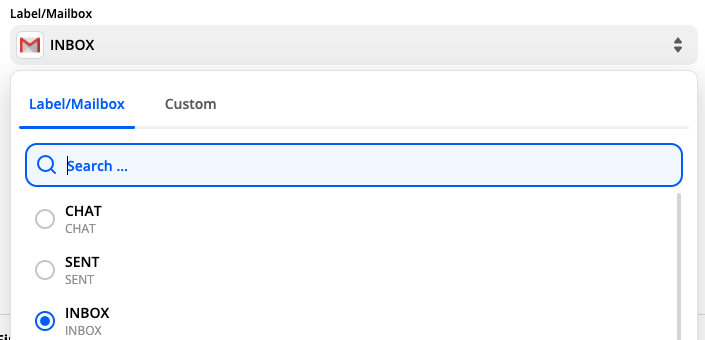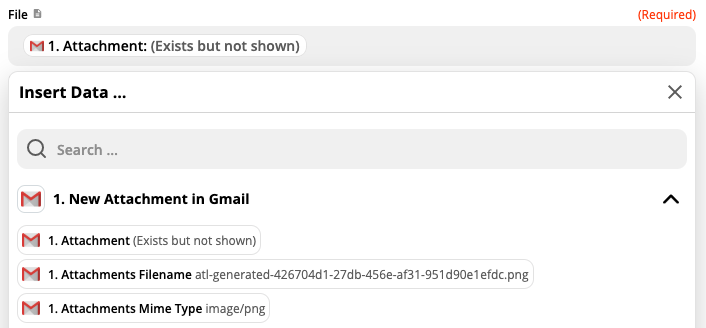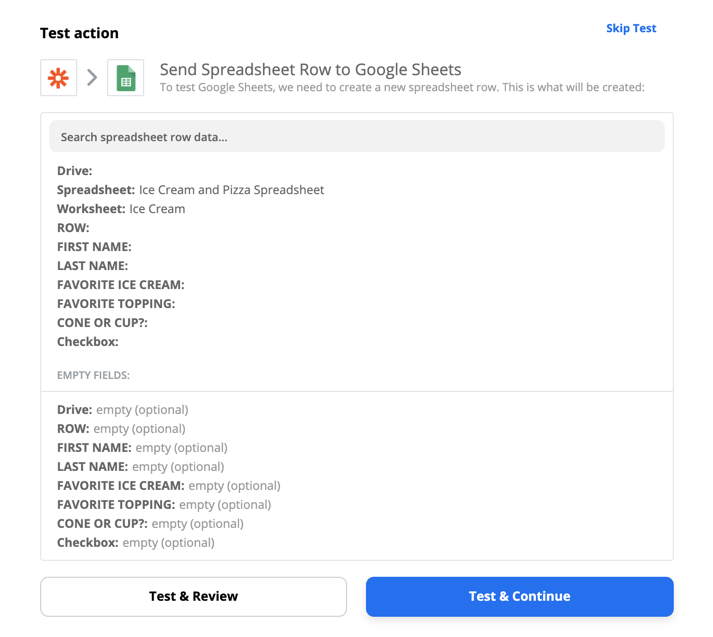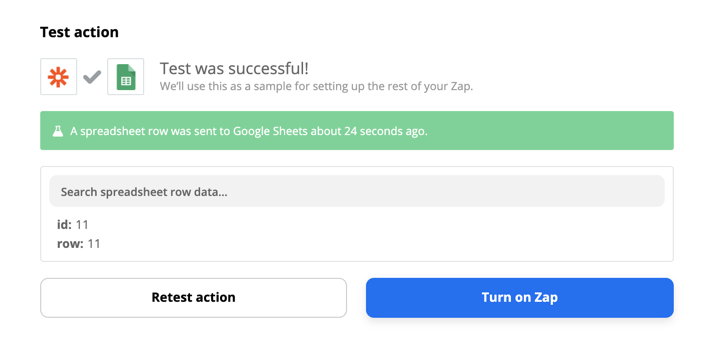Learn more about setting up actions over Zapier
To be covered:
Intro
After you set up your Zap trigger, the next step is to add an action to your Zap. An action is an event your Zap performs when your trigger event occurs.
If you want to receive a Slack notification every time you receive a new email in your Gmail inbox, the Zap action is to send a direct message in Slack.
Zaps are limited to 100 steps, including all steps within paths. If you need more than 100 steps, you can separate your Zap into multiple Zaps. Or, you can use paths, create a lookup table with Formatter, or pick from a list of items with Formatter.
How to set up the actions in a Zap
1. Choose your app and event
The action app is the app that will perform your task.
- In the Zap editor, click the Action step, or click the plus + icon to add an action to your Zap.
- Search for or select the app you want to use in your action.
- Click the Event dropdown menu and select the action that you want your Zap to perform.
2. Connect your account
- If you already have an account connected to Zapier for the action app, select it from the account menu.
- If not, click Connect a new account and follow the instructions to connect your app to Zapier.
- If the connection is working, click Continue.
3. Set up your action
Next, set up the data that you want to send over to your action app.
In this step, you'll see dropdown menus and/or form fields to fill in. Some are required, while others are optional. Different fields accept different types of data—for example, dates, text, or numbers—and there are three different field types that may appear:
Dropdown menus: click the down arrow to select from a list of options.

Text fields: enter a value, or map data from previous steps. To map data, click the dropdown menu and select a variable from the list.
For example, if you're setting up an action to upload new Gmail attachments to Dropbox, you would map the attachment file from the trigger (New attachment in Gmail) to the action.

List fields: collections of text fields that let you send multiple values over. To send more than one item, click the empty field below the current field.

After filling in all required fields and any optional fields, click Continue to move to the final step.
Each action step has a limit of 1,000 fields. This includes fields like Name and Email Address that are standard in your app and custom fields that you create in your app.
4. Test your action step
The final step is to see if your action works as expected. The first screen will show you the data input for your action, which is what will be sent to your action app.

To run the action step, click Test & Continue.
The next screen will show you whether or not Zapier was able to successfully perform the action step for you.

Once you’ve set up your Zap action, you can add another action or finish setting up the Zap. Click on Turn on Zap if you are ready to launch the integration.
Note
When you test an action step, the Zap will send live data to your action app. For example, if your action creates an invoice, a real invoice will be created in your invoicing app.
Last updated - Nov 2022.
Written by Natasha Santiago

If you didn't find an answer to your questions, please contact the Support Team here.
